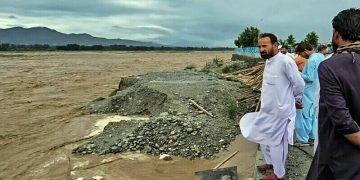The agricultural industry in China is a shining example of the potential of “smart agriculture”, which is transforming conventional farming methods by incorporating cutting-edge technologies and data-driven decision-making. China has adopted smart agriculture as a strategy to improve the country’s agricultural landscape’s levels of productivity, sustainability, and efficiency in light of the country’s expanding population and the accompanying increase in the strain on food production.
The Internet of Things (IoT), artificial intelligence (AI), and big data analytics have been put to use in China’s smart agriculture, which has made farming a more precise and efficient operation. Farmers in China have been able to increase agricultural yields, make more informed decisions, and maximize resource allocation because to the combination of real-time data collecting, advanced analytics, and automated technologies. Several astonishing results have been brought about as a consequence of China’s adoption of modern agricultural practices. Because farmers now have a better handle on crucial aspects like irrigation, fertilizer, and insect management, crop quality has increased while environmental impact has decreased. In addition, the utilization of drones and satellite imaging for the purpose of crop monitoring has enabled the early detection of illnesses, efficient pest control, and targeted interventions, which has resulted to a reduction in losses and an increase in profitability.
China’s smart agricultural projects have placed a significant emphasis on water management as a key area of concern. As a result of limited water resources and rising demand, intelligent irrigation systems that make use of sensors that measure soil moisture, data that is collected from weather stations, and AI algorithms have been put into place. This strategy permits precise irrigation scheduling, which in turn helps reduce water wastage and enhances the efficiency with which water is used. Pakistan, a country that is going through its own unique set of difficulties in the agricultural sector, can learn a lot from China’s experience with intelligent agriculture. The agricultural sector of Pakistan’s economy plays an important role, although it faces challenges such as a lack of water, low productivity, post-harvest losses, and restricted access to markets. Despite these challenges, the sector continues to struggle. Pakistan is in a position to effectively address these difficulties if it examines China’s progress in the field of intelligent agriculture and adapts suitable tactics based on what it learns.
Pakistan can learn from China’s smart agriculture journey by these ways:
(1) Technological adoption, the implementation of sustainable farming practices in Pakistan depends heavily on the country’s willingness to embrace new technologies. Farmers have the potential to improve their production, efficiency, and long-term sustainability by adopting a variety of technologies. One of the most important technologies is called the Internet of Things, or IoT, and it entails installing sensors and other connected devices in fields in order to collect real-time data on the state of the soil and other environmental aspects. With this information, we can devise more effective tactics for irrigating, fertilizing, and controlling pests. Farmers can be able to build detailed field maps and monitor crop health thanks to the advent of precision agriculture, which will facilitated by technologies such as GPS, drones, and satellite images. This allows for the precise application of agricultural inputs. Farm operations can be conveniently managed and controlled from a distance. Data analytics and artificial intelligence algorithms process data from a variety of sources to provide insightful information that can be used in decision-making. Mobile applications and farm management software provide farmers with the tools necessary to better organize agricultural tasks, gain access to information, and network with industry professionals. The use of renewable energy solutions, such as irrigation systems powered by solar energy, is one way to handle energy concerns in a sustainable manner. Increased agricultural output, more effective use of resources, and enhanced farmer lives are all attainable goals for Pakistan if the country were to more broadly implement technology solutions.
(2) Water management, Pakistan’s is experiencing significant water scarcity problems, water conservation is one of the most important concerns in agricultural production today. Improving the effectiveness of water use and finding a solution to this problem can be greatly aided by the installation of intelligent irrigation systems. These systems make use of sensor-based technologies and predictive analytics to optimize irrigation practices, thereby conserving water resources while simultaneously reducing the amount of stress placed on crops. Real-time information on soil conditions, weather patterns, and the amount of water that crops require can be obtained through the use of sensor-based technologies such as soil moisture sensors, weather stations, and evapotranspiration sensors. This information is gathered and analyzed so that the precise irrigation needs of individual crops and fields can be ascertained. Pakistani farmers can avoid over-irrigation and apply water only when and where it is necessary by using this information, which will result in a significant reduction in the amount of water that is wasted. The collected sensor data is processed by predictive analytics algorithms, which then generate irrigation schedules based on historical patterns, weather forecasts, and crop water demand models. These algorithms can optimize the timing and duration of the irrigation process, ensuring that crops get the right amount of water without getting too much of it. Intelligent irrigation systems reduce the amount of stress placed on crops and maximize their potential yields by ensuring they are not under- or over-irrigated. In addition, intelligent irrigation systems can be combined with automated control mechanisms, such as drip irrigation or sprinklers, to achieve more accurate water distribution to the root zone of plants. This results in less water being lost as surface runoff or as a result of evaporation, further contributing to an increase in the effective utilization of water.
(3) Crop monitoring and disease management, Pakistan is able to enhance its crop monitoring capabilities and improve agricultural practices by utilizing drone technology, satellite imagery, and artificial intelligence algorithms. These technologies make it possible to detect diseases, pests, and nutrient deficiencies at an earlier stage, which enables timely interventions and reduces the amount of yield that is lost. From above, drones that are outfitted with high-resolution cameras and other sensors are able to take detailed photographs of crops. Using AI algorithms, these images can be analyzed to discover potential problems such as diseases, pests, and nutrient deficiencies. Algorithms that use machine learning can be taught to recognize particular patterns or indicators of the health of a crop or the stress that it is experiencing, which enables accurate and efficient detection. Imagery captured by satellites offers a more comprehensive view that spans extensive agricultural regions.
Images can be captured by satellite sensors at a variety of wavelengths, which enables the detection of variations in crop health, canopy density, and nutrient levels. The data can be processed by AI algorithms, which can then identify areas of concern and pinpoint specific locations that need attention. The rapid analysis of the gathered data is made possible through the integration of these technologies with AI algorithms. The algorithms are able to identify particular diseases, pests, or nutrient deficiencies by comparing the captured images with established databases or models that have already been pre-trained. The agronomists and farmers who receive this information can then use it to generate insights and recommendations that they can put into action. Interventions in a timely manner, based on early detection, allow farmers to take appropriate measures, such as targeted applications of pesticides or adjustments to management strategies for nutrients. This can stop the spread of diseases, put a stop to infestations of pests, and correct nutrient imbalances before they result in significant crop losses. The adoption of cutting-edge technologies for crop monitoring in Pakistan could have a significant positive impact on agricultural productivity and long-term viability. Farmers are able to minimize the loss of yield, maximize the use of resources, and make more informed decisions about crop management when timely interventions are made possible. This, in the long run, helps contribute to the nation’s food security, economic growth, and sustainable agricultural practices. Pakistan has a number of options available to it that will help to overcome challenges to the adoption of smart agriculture and foster economic growth. First and foremost, it should concentrate on the development of infrastructure, the improvement of digital connectivity, and the guarantee of a reliable electricity supply to rural areas.
This will make it easier to implement smart agriculture technologies such as systems driven by data and devices connected to the internet of things. Second, there needs to be a significant focus on the incorporation of new technologies as well as training. Farmers and other stakeholders can be educated about the benefits and usage of smart agriculture technologies through the implementation of training programs and capacity-building initiatives. Third, putting in place reliable data collection systems that make use of sensors, satellite imagery, and weather stations can provide extremely helpful information regarding the moisture content of the soil, the health of the crop, and the conditions of environment. Fostering collaboration and partnership between government agencies, research institutions, entities from the private sector, and organizations representing farmers should also be encouraged in order to promote the sharing of information and the pooling of resources. For the purpose of encouraging farmers and business owners to make investments in intelligent agriculture, a conducive policy and regulatory framework, along with financial support mechanisms, should be developed. Additional actions that can help drive the adoption of smart agriculture in Pakistan include bolstering extension services, conducting awareness campaigns, promoting market access and value chain development, and encouraging research and innovation.






























